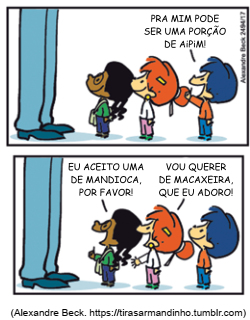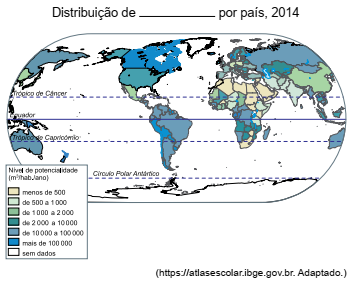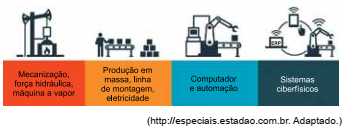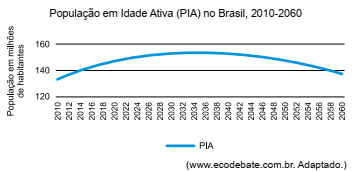Questões de Concurso Militar PM-SP 2022 para Aluno - Oficial PM
Foram encontradas 80 questões
Os 40 anos dos governos dos reis D. João II e D. Manuel (1481-1521) cobrem momentos extremamente fecundos da história da Humanidade. É o tempo das grandes viagens e descobertas marítimas: a de Bartolomeu Dias que, na tábua das naus, sem combate com os homens mas tão só com os elementos, verificou a ligação do Atlântico e do Índico; a viagem de Cristóvão Colombo que ligou permanentemente a Europa, ávida de ouro e prata, a um novo continente, a América; a de Vasco da Gama que duradouramente uniu pelos oceanos e pelas naus da pimenta o Ocidente ao Oriente; a viagem de Pedro Álvares Cabral que ligou Lisboa e a Europa ao Atlântico Sul.
(António Borges Coelho. “Os argonautas portugueses e o seu velo de ouro (séculos XV e XVI)”. In: José Tengarrinha (org.). História de Portugal, 2001.)
O excerto refere-se à cronologia histórica que tem como referência o período de governo de dois reis portugueses. Nesse período,
Os índios reduzidos fraudulentamente ao cativeiro constituem a imensa maioria da população servil. Ora, nenhum colono existe, por muito miserável, que não explore uma criatura do gentio. Com dois ou três índios tem a vida assegurada: um lhe pesca, outro lhe caça, outro lhe granjeia as roças.
(Alcântara Machado. Vida e morte do bandeirante, 2006. Adaptado.)
O excerto descreve as relações sociais na Capitania de São Vicente anteriores ao descobrimento das minas de ouro no final do século XVII. Confrontando-se a colonização dessa região com a de Pernambuco e da Bahia na mesma época, percebe-se, no povoamento do planalto paulista,
[...] a revolução que eclodiu entre 1789 e 1848 [...] constitui a maior transformação da história humana desde os tempos remotos quando o homem inventou a agricultura e a metalurgia, a escrita, a cidade e o Estado. Esta revolução transformou, e continua a transformar, o mundo inteiro.
(Eric J. Hobsbawm. A Era das revoluções: Europa 1789-1848, 1981.)
As profundas rupturas históricas citadas no excerto definem-se como mudanças
A oligarquia cafeeira, como detentora dos maiores poderes políticos no período republicano, é responsável por algumas das deformações mais profundas da sociedade brasileira. Toda participação democrática na vida política se reduz aos grupos de pressão oligárquicos em disputa pelo controle das matérias que afetam os seus interesses.
(Darcy Ribeiro. O povo brasileiro: a formação e o sentido do Brasil, 2008. Adaptado.)
A situação abordada no excerto remete a questões políticas presentes na Primeira República brasileira, tal como
Leia o trecho do discurso do ex-primeiro-ministro inglês Winston Churchill, pronunciado na cidade norte-americana de Fulton, em 1946.
De Stettin, no Báltico, a Trieste, no Adriático, desceu uma cortina de ferro sobre o continente. Por trás dessa linha estão todas as capitais dos antigos Estados da Europa Central e Oriental: Varsóvia, Berlim, Viena, Budapeste, Belgrado, Sófia e Bucareste.
(Martin Gilbert. Churchill: uma vida, 2016.)
Nesse discurso foi empregada a expressão “cortina de ferro”, que se referiu, em grande parte da segunda metade do século XX,
A ecologia está em toda parte: Mas que ecologia? “Preservar o meio ambiente é, para a Louis Vuitton, muito mais do que uma obrigação: é um imperativo, um motor de competividade”, explica o grupo especializado em artigos de luxo. Entre 1993 e 2021, o número de países europeus cujo governo conta com um ministro ligado aos partidos da ecologia política passou de um para onze. O bom resultado obtido pelos Verdes nas eleições legislativas alemãs de 26 de setembro de 2021 (14,8%), por exemplo, pode ser mais bem avaliado quando detalhamos as características sociológicas de um eleitorado mais jovem, urbano, ocidental, abastado e feminino. O partido obteve os votos de apenas 8% dos trabalhadores braçais.
(Benoît Bréville e Pierre Rimbert. “Os ecologistas no poder: amornar a fervura”. Le monde diplomatique Brasil, dezembro de 2021. Adaptado.)
O excerto faz um balanço do movimento ambientalista europeu,
No sentido amplo, antropológico, cultura é tudo o que o ser humano produz para construir sua existência e atender a suas necessidades e desejos. A Conferência Mundial sobre Políticas Culturais, realizada pela Unesco no México em 1982, consagrou como conceito de cultura o conjunto das características distintivas, espirituais e materiais, intelectuais e afetivas que caracterizam uma sociedade ou um grupo social. A cultura engloba, além das artes e das letras, os modos de vida, os direitos fundamentais do ser humano, os sistemas de valores, as tradições e as crenças.
(Maria Lúcia de Arruda Aranha. Filosofia da Educação, 2006. Adaptado.)

Depreende-se da comparação entre o excerto e a tirinha que
o conceito de cultura refere-se
Leia um trecho da Carta de São Francisco, de 26 de junho de 1945, que deu origem à Organização das Nações Unidas.
Desenvolver relações entre as nações, baseadas no respeito ao princípio da igualdade de direitos e da autodeterminação dos povos, e tomar outras medidas apropriadas ao fortalecimento da paz universal; conseguir uma cooperação internacional para resolver os problemas internacionais de caráter econômico, social, cultural ou humanitário, e para promover e estimular o respeito aos direitos humanos e às liberdades fundamentais para todos, sem distinção de raça, sexo, língua ou religião…
(José Damião de Lima Trindade. História social dos direitos humanos, 2002.)
A Carta de São Francisco almejava
O dever, afirma Kant, não se apresenta através de um conjunto de conteúdos fixos, que definiriam a essência de cada virtude e diriam que atos deveriam ser praticados e evitados em cada circunstância de nossa vida. O dever não é um catálogo de virtudes nem uma lista de “faça isto” e “não faça aquilo”. O dever é uma forma que deve valer para toda e qualquer ação moral.
(Marilena Chauí. Convite à Filosofia, 2008.)
Para o filósofo Immanuel Kant (1724-1804), verifica-se a validação de uma regra moral caso
Leia o trecho de uma entrevista com a ativista sueca Greta Thunberg.
Greta Thunberg: a Terra é um sistema muito complexo. Quando removemos algo, o sistema fica em desequilíbrio, e isso impacta aspectos que vão além da nossa compreensão. E isso vale para a igualdade também. Os seres humanos fazem parte da natureza, e se não estamos bem, então a natureza não está bem, porque nós somos a natureza.
(www.nationalgeographicbrasil.com. “Greta Thunberg reflete sobre viver em meio a múltiplas crises em uma ‘sociedade da pós-verdade’”, 30.11.2020.)
Esse trecho da entrevista revela que Greta Thunberg manifesta uma visão diferente da teoria do filósofo empirista britânico Francis Bacon (1561-1626) sobre a natureza, já que para ele
No tabuleiro da aprendizagem, o aluno que estava no terceiro ano do ensino fundamental em 2019 avançou uma casa em 2020, mas deu de cara com o coronavírus, que o afastou das aulas presenciais. Mesmo com dificuldade, esse estudante foi para o quinto ano em 2021, mas outra vez foi retirado da escola por causa da pandemia.
O diretor de Políticas Educacionais da Fundação Lemann, Daniel de Bonis, diz que a defasagem dos alunos não vai ser superada de uma hora para outra, mas enxerga aí uma oportunidade: “Os alunos vão estar, certamente, muito sedentos do contato com os colegas. O professor pode utilizar isso desenvolvendo, por exemplo, atividades em grupo, atividades colaborativas, que os façam interagir”.
(www.g1.globo.com. “Pesquisa inédita mede o impacto da pandemia na educação em SP”, 26.04.2021. Adaptado.)
O excerto, analisado sob a ótica das teorias sociológicas, evidencia
A ênfase na flexibilidade está mudando o próprio significado do trabalho, e também as palavras que empregamos para ele. “Carreira”, por exemplo, significava originalmente, na língua inglesa, uma estrada para carruagens, e, como acabou sendo aplicada ao trabalho, um canal para as atividades econômicas de alguém durante a vida inteira. O capitalismo flexível bloqueou a estrada reta da carreira, desviando de repente os empregados de um tipo de trabalho para outro. A palavra job [serviço, emprego], em inglês do século XIV, queria dizer um bloco ou parte de alguma coisa que se podia transportar numa carroça de um lado para o outro. A flexibilidade hoje traz de volta esse sentido arcano de job, na medida em que as pessoas fazem blocos, partes de trabalho, no curso de uma vida.
(Richard Sennett. A corrosão do caráter: consequências pessoais do trabalho no novo capitalismo, 2015. Adaptado.)
A flexibilidade e as transformações no trabalho citadas pelo sociólogo Richard Sennett geram
Bancada feminina do Senado brasileiro
conquista direito a banheiro feminino no Plenário
A conquista se deu graças à reivindicação das senadoras, que questionavam há anos o tratamento desigual. Até dezembro de 2015, o banheiro das parlamentares era o do restaurante anexo ao Plenário, disponível desde 1979, quando foi eleita a primeira senadora, Eunice Michilis.
Para a procuradora Vanessa Grazziotin, a construção do banheiro “muda a estrutura física da Casa para que receba melhor as mulheres”.
(www.senado.leg.br, 06.01.2016. Adaptado.)
A ausência do banheiro feminino no Senado até 2016 pode ser considerada um reflexo
Examine o mapa.

Considerando esse mapa, o termo que preenche a lacuna
do título é:
Esse modelo vincula-se a um compromisso entre três contradições fundamentais: os interesses das gerações atuais diante dos das gerações futuras, os interesses dos países industrializados e os dos países em desenvolvimento, as necessidades dos seres humanos e as da preservação dos ecossistemas.
(Yvette Veyret (org.). Dicionário do meio ambiente, 2012. Adaptado.)
O modelo citado no excerto caracteriza
Analise a imagem.

Os elementos encontrados na imagem fazem referência
O mundo está cada vez mais interligado, o que contribui de modo decisivo para a criação de uma ordem econômica multilateral. Assim, o termo “multilateralismo” aplica-se a um sistema internacional, no qual diversos Estados passam a se relacionar por princípios democráticos e a considerar os interesses de cada um na tomada de decisões.
(James O. Tamdjian e Ivan L. Mendes. Geografia, 2013. Adaptado.)
Considerando o excerto, o marco que deu início à atual ordem econômica multilateral foi
Analise o gráfico.

Considerando a análise do gráfico e conhecimentos sobre a
estrutura da população brasileira, a projeção da PIA no Brasil
justifica-se pelas atuais tendências